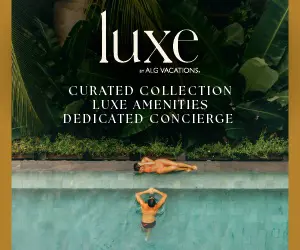Mandarin Oriental Holds the Top Spot in LTI’s 2025 Luxury Brand Rankings
Aman rises to second, Four Seasons rebounds, and Banyan Tree debuts in LTI’s 2025 top 15.

Mandarin Oriental Zurich. Photo: Courtesy of Mandarin Oriental
LTI — Luxury Travel Intelligence has named Mandarin Oriental the world’s best luxury hotel brand for the third year in a row, underscoring the group’s ability to consistently sharpen its performance in a sector defined by rapid evolution and rising guest expectations.
Mandarin Oriental secured an overall score of 81.8% in LTI’s 2025 rankings, edging out Aman (80.7%) and Bulgari (80.6%). The top five rounded out with Oetker Collection and Rosewood, while Four Seasons made the most notable climb, jumping from 12th to 6th place on the strength of ongoing property upgrades and high-touch programming. New entrant Banyan Tree debuted at number 14.
Unlike consumer-facing lists, LTI’s methodology prioritizes brand-wide integrity over individual “wow” properties. The organization evaluates 130 touchpoints—from leadership and management culture to staff training, guest engagement, and the effective use of capital investments. The maximum possible score is 4,663, making small percentage shifts meaningful. Each year, the process resets to capture the current competitive landscape rather than compound past performance.
The real takeaway from this year’s report is not only which brands rose or fell, but why. Mandarin Oriental’s repeat win reflects an emphasis on loyalty-building and a steady pipeline of renovations and openings that reinforce its positioning without overextending. Aman’s jump from fifth to second highlights how even brands with a famously niche ethos must demonstrate scalability without compromising intimacy. And the Four Seasons rebound signals how legacy players can recapture momentum when capital investments are paired with service renewal.
But the bigger story may be the warning LTI founder Michael Crompton has attached to the rankings. He flagged what he calls a “critical mismatch” between the billions being poured into ultra-luxury properties and the shortage of seasoned talent to operate them. “Relying on well-meaning but inexperienced locals under the guise of offering ‘a sense of place’ or ‘relaxed luxury’ is no longer acceptable,” he said, noting that today’s traveler demands flawless execution. LTI plans to update its scoring algorithm in 2026 to more directly measure how brands are addressing the staffing gap.
For the industry, this raises a sharper point: Design and amenities can only go so far without the human capital to deliver on the promise. As new flagships open across Asia, the Middle East, and Africa, the brands that climb in future LTI rankings are likely to be those that invest in cultivating management pipelines as aggressively as they invest in architecture.



